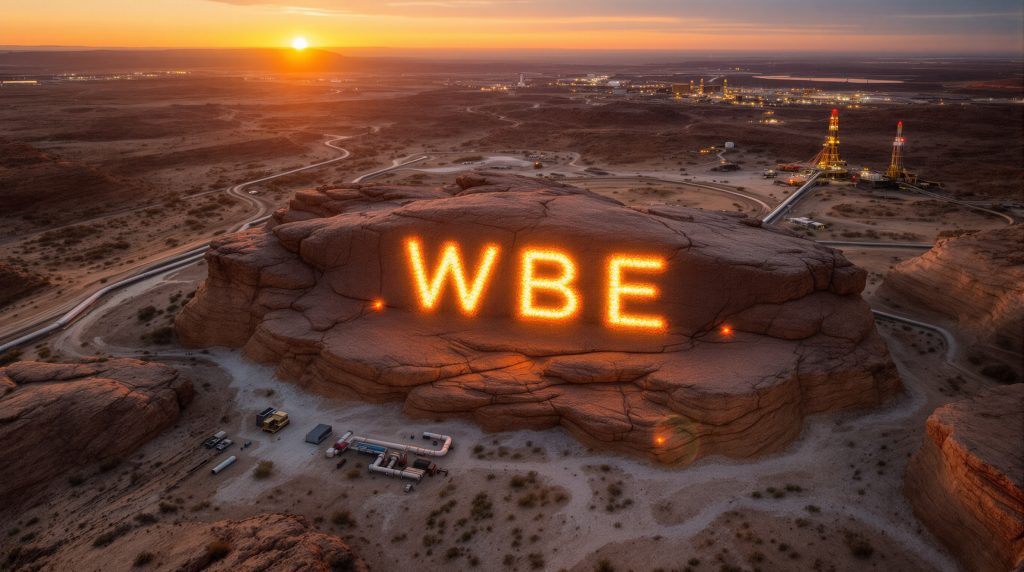Unlocking Perth Basin's Sleeping Giant
Whitebark Energy has launched a fresh technical assessment of the Warro Gas Field, potentially one of the largest undeveloped onshore gas resources in Western Australia. The field, which previous operators invested over $100 million to evaluate, contains an estimated 4.4-11.6 TCF of gas in place according to independent reviews.
The company's new technical team is employing modern analytical methods to reassess historical well data with several key objectives:
- Identifying producible gas zones within the field
- Understanding and mitigating water production issues encountered in previous campaigns
- Enhancing overall recovery potential
- Investigating deeper stratigraphic targets through modern 3D seismic reprocessing
"The Warro Gas Field remains one of the largest undeveloped onshore gas resources in Western Australia. By undertaking this review, we are seeking to unlock its potential at a time when the State is facing strong demand for reliable domestic gas supply," said Chief Operating Officer Nik Sykiotis.
Strategic Location in WA's Energy Infrastructure
The Warro Gas Field enjoys several strategic advantages that enhance its commercialisation potential:
| Attribute | Details |
|---|---|
| Location | 200km north of Perth |
| Pipeline Proximity | Just 30km from the major Dampier-Bunbury Natural Gas Pipeline |
| Size | 7,000ha gas field with potential to supply >10% of WA's gas consumption |
| Resource Potential | 4.4-11.6 TCF of gas in place (based on 2015 independent review) |
| Historical Drilling | 6 wells drilled (2 in 1977, 4 between 2009-2016) |
| Previous Flow Rates | ~1-2 MMscf/d from more recent wells |
Understanding Tight Gas Reservoirs
The Warro Gas Field represents what is known as a "tight gas" reservoir, requiring specialised techniques to extract its potential. Unlike conventional gas fields where gas flows easily, tight gas reservoirs have low permeability, meaning the gas cannot move freely through the rock.
What is a Tight Gas Reservoir?
Tight gas is natural gas contained in rock formations with very low permeability – typically sandstone or limestone with pore spaces that are unusually small and poorly connected. These geological characteristics make the gas difficult to extract using conventional methods.
In standard gas reservoirs, natural gas can flow relatively freely through interconnected pore spaces in the rock. However, in tight formations, these pathways are restricted, requiring additional stimulation to create artificial flow paths for the gas to reach the wellbore.
Technical Challenges at Warro
Tight gas reservoirs typically require stimulation techniques to create pathways for the gas to flow. Previous operators encountered challenges with water production alongside gas flows, which Whitebark's technical team is now specifically addressing. The company is evaluating methods to suppress water production while enhancing gas recovery.
The Western Australian government's 2019 Fracture Stimulation Implementation Plan allows for onshore fracture stimulation in Western Australia, including on the R7 permit area covering Warro. Whitebark is awaiting final regulations to understand which reservoir stimulation methods will be permitted in the future.
Modern Approaches to Tight Gas
Recent advances in reservoir characterisation, drilling technologies, and stimulation methods have significantly improved the economic viability of tight gas resources globally. Key developments include:
- Advanced petrophysical interpretation to better identify gas-rich zones
- Improved stimulation designs that minimise water production
- Enhanced completion techniques optimised for tight reservoirs
- More efficient water management and treatment systems
Whitebark's fresh assessment incorporates these modern approaches, potentially allowing for successful development where previous attempts faced challenges.
Commercialisation Pathway and Timeline
Whitebark's technical approach follows a staged evaluation process:
- Initial Assessment (Current): New petrophysical interpretation of legacy well data by industry expert Steve Adams
- Technical Analysis: Determining why previous appraisal campaigns produced excessive water and developing mitigation strategies
- Seismic Reprocessing: Potential reprocessing of existing 3D seismic data using modern algorithms
- Commercialisation Planning: Developing pathways to bring Warro gas to market
The company has not yet announced specific timelines for completion of these stages, but the renewed focus on Warro represents a significant shift in strategy for Whitebark Energy revives Warro Gas Field.
The Western Australian Gas Market Opportunity
Western Australia's domestic gas market presents a compelling opportunity for producers like Whitebark. The state operates under a domestic gas reservation policy requiring LNG exporters to set aside gas for local use, but additional supply sources remain in high demand.
Key market dynamics include:
- Strong industrial demand from mining and manufacturing sectors
- Rising gas prices creating favourable economics for new developments
- Strategic importance of energy security for Western Australia
- Potential for Warro to supply more than 10% of the state's gas consumption
Even recovering a modest volume of gas from this field would be materially significant for Whitebark, particularly in the context of rising WA gas pricing.
Historical Context
The Warro Gas Field has been known since the late 1970s when the first two wells were drilled in 1977, confirming the presence of a substantial gas resource. However, the low permeability of the reservoir presented technical challenges that were difficult to overcome with the technology available at that time.
Between 2009 and 2016, four additional wells were drilled, achieving gas flows of approximately 1-2 MMscf/d. These wells confirmed the substantial resource potential but also highlighted technical challenges that needed to be addressed for full-scale commercial development.
Regulatory Environment
The regulatory landscape for gas development in Western Australia has evolved significantly in recent years. The WA Government's 2019 Fracture Stimulation Implementation Plan established a framework for onshore fracture stimulation, including provisions for the R7 permit area covering Warro.
Whitebark is currently awaiting the release of final regulations to better understand the specific reservoir stimulation methods that will be permitted. This regulatory clarity will be an important factor in determining the optimal development approach for the field.
Why Investors Should Follow Whitebark Energy
Whitebark Energy presents an interesting proposition for investors seeking exposure to the Australian energy sector:
-
Significant Resource Potential: With control of one of Western Australia's largest undeveloped gas fields, even partial commercialisation could transform the company.
-
Technical Approach: The company's methodical re-evaluation strategy addresses specific challenges that hindered previous development attempts.
-
Favourable Market Timing: Western Australia's strong demand for domestic gas creates a receptive market environment.
-
Management Experience: The company's refreshed strategy and technical team bring new perspectives to long-standing challenges.
-
Strategic Asset: Warro's proximity to major pipeline infrastructure significantly reduces future development costs and improves commercialisation prospects.
For investors interested in small-cap energy opportunities with substantial upside potential, Whitebark Energy revives Warro Gas Field represents a compelling development to monitor in the coming months.
The re-evaluation of Warro aligns with Whitebark's broader strategy of advancing high-impact energy assets across Australia, including its projects in South Australia's Officer Basin. This diversified approach, combined with the significant potential of the Warro Gas Field, positions the company to potentially deliver long-term value as it works to address Western Australia's growing energy needs.
Ready to Capitalise on Western Australia's Gas Potential?
Discover how Whitebark Energy is working to unlock one of WA's largest undeveloped onshore gas resources. With an estimated 4.4-11.6 TCF of gas in place and strategic positioning just 30km from major pipeline infrastructure, the Warro Gas Field represents a significant opportunity in Australia's evolving energy landscape. To learn more about this compelling investment opportunity and stay updated with the company's progress, visit Whitebark Energy's announcement page.




